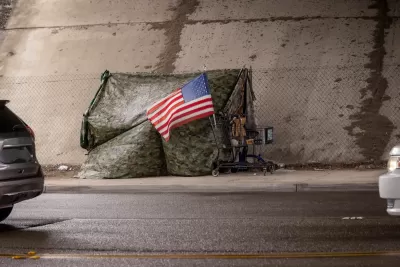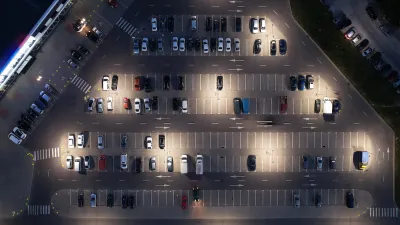Fraud, violence, death, and chaos follow a billion dollar investment in a temporary solution that is proving ineffective.

With over one billion dollars spent since 2018, homeless shelters in California are proving “deadlier than jails,” according to an in-depth investigation by CalMatters, in association with the Associated Press. After the full investigation was released on February 25, AP summarized the seven top findings. According to the AP’s Lauren Helper, California’s temporary shelters have become a “housing purgatory” with dangerous conditions, where people often don’t get the help they need to find long-term housing.
The seven key findings of the report, also authored by Helper, include:
- 1. “Local and state officials bet big on shelters” as the default answer to homelessness, especially after the Supreme Court’s blessing to ban sleeping outside. The number of emergency beds in California has doubled since 2018 and is still only enough to serve a third of the homeless population.
- 2. “Shelters are deadlier than jails” with annual shelter deaths tripling between 2018 and 2024.
- 3. “Inside shelters, chaos frequently breaks loose” with everything from black mold to hired security guards committing sex crimes.
- 4. “Fewer than 1 in 4 people who cycle through shelters move into a permanent home,” opening questions about the efficacy of the model as it relates to the stated goal.
- 5. “Scandals have plagued fast-growing shelter operators” bringing in millions of dollars while undergoing accusations of fraud, violence, sexual misconduct and more.
- 6. “Local and state oversight is failing” with cities and counties ignoring laws that require them to report on problematic conditions.
- 7. “Experts say there are several potential solutions” like direct rent assistance, specialized sober living options, and several other programs intended to permanently end homelessness.
Read AP’s summary, which links to the full investigation, below.
FULL STORY: 7 takeaways from our investigation into California homeless shelters

Manufactured Crisis: Losing the Nation’s Largest Source of Unsubsidized Affordable Housing
Manufactured housing communities have long been an affordable housing option for millions of people living in the U.S., but that affordability is disappearing rapidly. How did we get here?

Americans May Be Stuck — But Why?
Americans are moving a lot less than they once did, and that is a problem. While Yoni Applebaum, in his highly-publicized article Stuck, gets the reasons badly wrong, it's still important to ask: why are we moving so much less than before?

Using Old Oil and Gas Wells for Green Energy Storage
Penn State researchers have found that repurposing abandoned oil and gas wells for geothermal-assisted compressed-air energy storage can boost efficiency, reduce environmental risks, and support clean energy and job transitions.

Updating LA’s Tree Rules Could Bring More Shade to Underserved Neighborhoods
A new USC study finds that relaxing Los Angeles’ outdated tree planting guidelines could significantly expand urban tree canopy and reduce shade disparities in lower-income neighborhoods, though infrastructure investments are also needed.

California's Canal Solar Projects Aim to Conserve Resources and Expand Clean Energy
California’s Project Nexus has begun generating electricity from solar panels installed over irrigation canals, with researchers and state agencies exploring statewide expansion to conserve water and boost clean energy production.

HHS Staff Cuts Gut Energy Assistance Program
The full staff of a federal program that distributes heating and cooling assistance for low-income families was laid off, jeopardizing the program’s operations.
Urban Design for Planners 1: Software Tools
This six-course series explores essential urban design concepts using open source software and equips planners with the tools they need to participate fully in the urban design process.
Planning for Universal Design
Learn the tools for implementing Universal Design in planning regulations.
Heyer Gruel & Associates PA
City of Moreno Valley
Institute for Housing and Urban Development Studies (IHS)
City of Grandview
Harvard GSD Executive Education
Salt Lake City
NYU Wagner Graduate School of Public Service
City of Cambridge, Maryland





























